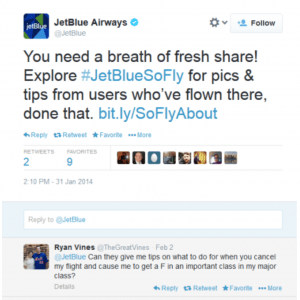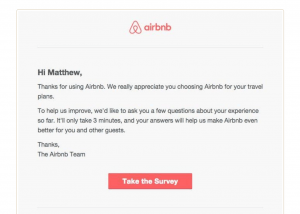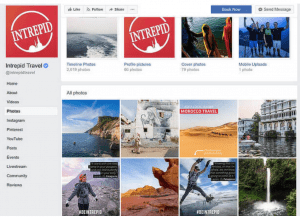Digital Marketing in The 90’s
Digital marketing has been around for MANY years. There have been numerous changes to the industry, such as the transformation of search engine, web design, email marketing, as well as the rise of social media. I decided to split this topic into two separate blog posts. That being the case, in this week’s topic I will be discussing the history and evolution of digital marketing in the 1990’s.
The Web Era



Computers were once widely inaccessible and very expensive. In the 1970’s, the basic HP Model was around $90,000. It was not until the late 90’s where personal computers were more accessible to the public. More people began purchasing personal computers between 1993-1998, therefore, people using the internet greatly increased (Comen, 2018). According to Statista, internet usage climbed from 15 million to 78 million during that time period.

$95,000 computer from the 1970’s
The first Internet browser to ever be created was the WorldWideWeb in 1990. This allowed “texts documents to be linked together over a public network.” Take a look at the first website to ever be created here. Limited people had access to WWW, mostly governments, private corporations, and universities (McPeak, 2018).
By 1994, Netscape was founded and released. This was the first widely accessible browser for the public. Additionally, Microsoft launched Internet Explorer in 1995. There was immense competition between the two, both attempting to prove that their products are better and faster. In 1997, Microsoft released Internet explorer 4.0. which occupied 75% of the market. On the other hand, NetScape went on to create Mozilla, which later becomes FireFox in the early 2000’s. Moreover, other competitors emerged into the market in the late 90’s and early 2000’s – including Safari and Google Chrome (Blitz, 2019).

Netscape browser from 1995
First Banner Ads
The first banner ads created were placed on HotWired.com, the first digital publication of Wired Magazine. They launched the first ever clickable banner ads for fourteen companies including AT&T, Club Med, and Zima (Lafrance, 2017).
Here are the first banner ads ran by Zima and AT&T:

Zima Banner Ad

AT&T Banner Ad
During this time, there was no playbook for digital marketing strategies. A majority of brands were just trying new things online. Additionally, analytics platforms did not exist resulting in no audience targeting, A/B testing, accurate session and page view numbers, and so on (Mccullough, 2014).
Email Marketing
Marketing through email was discovered in 1990’s. Brands discovered an opportunity to connect with the audience through instant communication and ability to quickly be shared. The main method utilized was chain email, considered as spam today. Chain emails are emails that ask the recipient, on the subject or body of the message, to forward the email to multiple people. In 1998, Hotmail became very popular obtaining around 30+ million users. This technique was an easy and quick way to communicate to with users as well as access new audiences. This method was disregarded around 2003 (Bael, 2018).

Chain email example
Website Design
Web design from the 1990’s included flash animation and text documents connected by links, and background images inserted in tables.

Microsoft website design in 1995
Please stay tuned for part two, where I will be discussing the history and evolution of digital marketing from the early 2000’s!
References:
Welcome to Digital Marketing & The Modern World. The purpose of this blog series is to examine as well as discuss how digital marketing, in the past decade, has altered how businesses and organizations develop and implement their marketing strategies.
Technology has had a significant impact on the marketing industry. In the past, traditional marketing such as billboards, television, and print used to dominate the industry. However, these techniques have become outdated. People do not look through magazines or newspapers anymore to search for advertisements or product reviews, instead they look online. Now, the emphasis is on reaching consumers through the digital world.
In case you are wondering what digital marketing is, in today’s topic I will be providing you with a brief description and guide to what this industry is all about.
What is Digital Marketing?
Definition: According to HubSpot, “Digital marketing encompasses all marketing efforts that use an electronic device and internet. Businesses leverage digital channels such as search engines, social media, email, and other websites to connect with current and prospective customers (Alexander, 2019).”
In other words, digital marketing is online and internet marketing using digital tools.
Today, digital marketing is about businesses reaching customers across all platforms with personalized messages. Preferably, marketing teams want to be able to track the role of each of these messages in order to reach their ultimate goal, conversions.
Why Is Digital Marketing Important?
Think of the last purchase or two that you made. Perhaps you purchased a sofa, ordered food to be delivered to your house, rented a new home, or hired someone to fix your AC?
Regardless of what you purchased, you most likely began your search online to learn more about the product or service, price, as well as the various options on the table. The final decision was most likely formulated from the ratings and reviews you have read, consultation from friends or family members, and your own research.
In this age, most purchases start online. Therefore, an online presence is vital.
As the Internet intertwines with almost everything we do, digital marketing becomes more and more important.
Why is that so? Well, according to Statista,
- As of October 2020, around 4.6 of 7.6 billion people in the world use the internet
- 30% of consumers prefer to interact with a brand on online rather than in store
In order for businesses to be competitive, they must be present across all digital channels and devices to meet consumer needs (Clement, 2020).
Types of Digital Marketing
There are many types of digital marketing to consider. Below I have listed the five common forms.
Social Media Marketing: Promoting brand and content on social media channels to increase brand awareness and engagement, drive traffic, and generate leads.

Email Marketing: Email is often used to promote content, discounts, events as well as to direct people toward the business’s website.

Search Engine Optimization: This process of optimizing a website to rank higher in search engine results pages, which results in increasing the amount of traffic (visitors) to the website.

Influencer Marketing: An effective way for brands to reach their target audience is through influencer marketing. Brands can partner up with macro, micro, or nano influencers to reach influencer followers with their content and offers.

Content Marketing: This method involves creating and sharing relevant content (texts, images, graphics, videos, social media posts) to attract and retain the audience.

The list goes on…but for now, I will leave it at here. I hope you all gained a brief overview about industry. Please stay tuned for my next post, where I will be discussing the history of digital marketing!
References:
Alexander, L. (2019, February). The Who, What, Why, & How of Digital Marketing. Retrieved from https://blog.hubspot.com/marketing/what-is-digital-marketing
Clement, J. (2020, November). Internet users in the world 2020. Retrieved from https://www.statista.com/statistics/617136/digital-population-worldwide
HubSpot. (n.d.). Digital Marketing Made Simple. Retrieved from https://www.hubspot.com/digital-marketing










